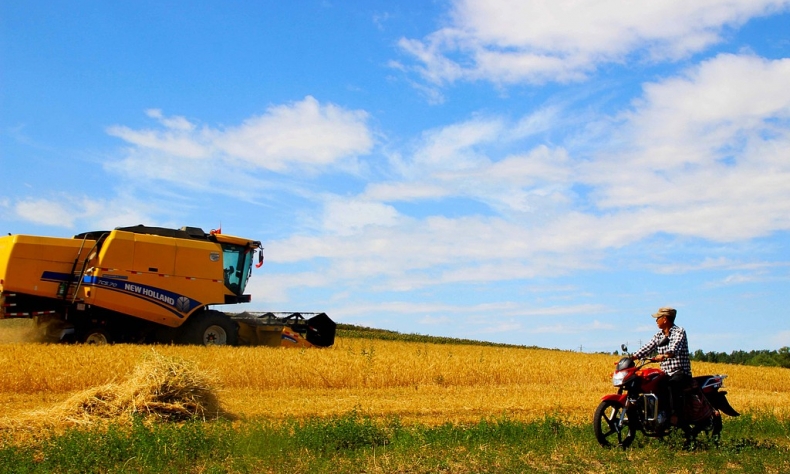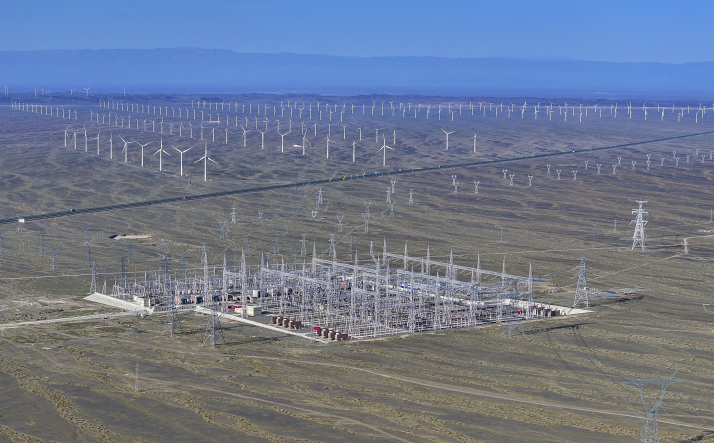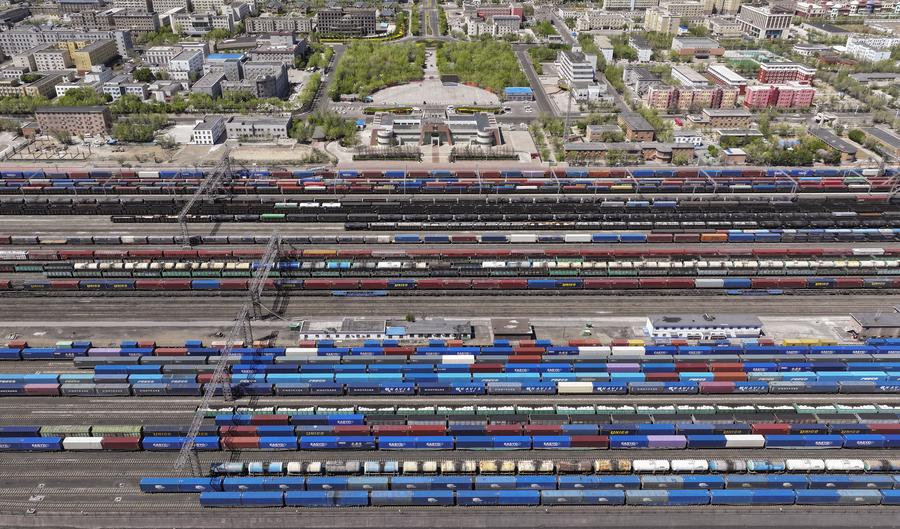Evolving Insights

Xinjiang has experienced remarkable changes, particularly in terms of development and modernization.
Xinjiang Uygur Autonomous Region has consistently been a compelling area of study for scholars both within China and internationally. Zhang Weiwei, Director of the China Institute at Fudan University in Shanghai, has focused much of his recent research on the transformations happening in Xinjiang. In a recent interview with Xinjiang Today reporter Li Fangfang, Zhang discussed the ongoing changes within the region, its evolving global image and the potential factors driving these developments. Edited excerpts of their conversation follow:
Xinjiang Today: Your current affairs TV show China Now has highlighted the development and transformation occurring in Xinjiang. The first episode focusing on Xinjiang, Episode 116 in 2021, was titled Xinjiang Is a Great Place, while a recent episode, Episode 240 in 2024, was titled The Development of Xinjiang: Forging the Strong and Resilient Chinese Spirit and Strength Together. Can you elaborate on how your understanding of Xinjiang has evolved over these three years?
Zhang Weiwei: Over the past three years, from my initial visit to Xinjiang to the most recent one, the region has experienced remarkable changes, particularly in terms of development and modernization. Xinjiang has emerged as a major food producer, from fish, wheat and rice, to many other agricultural products, in addition to its traditional fruit cultivation. It has effectively become one of China’s key granaries. To provide a comparative perspective, Xinjiang now surpasses its neighbor Kazakhstan, which was a significant grain producer during the Soviet era in the 1950s. Currently, Xinjiang produces at least 20 million tons of grain annually, while Kazakhstan’s production stands at around 17 million tons.
Furthermore, there have been huge advancements in green and alternative energies. Xinjiang stands as China’s largest base for solar and wind energy, as well as some other renewable energies. It would be beneficial for outsiders to follow the innovative approaches employed in Xinjiang. The region’s vast deserts present an opportunity to harness abundant solar energy, exemplified by initiatives like planting grass under solar panels and raising sheep, which contribute to what can be termed recycling and sustainable agriculture. Consequently, Xinjiang is witnessing the growth of various industries around its solar energy sector.
It is noteworthy that Chinese state-owned enterprises and the regional government are set to invest approximately 2 trillion yuan ($274 billion) into around 130 projects in Xinjiang over the next one to two years. This substantial investment will elevate Xinjiang’s position in the value chain, enabling the region to achieve higher standards.

Over the last five to 10 years, there has been a persistent spread of innuendo about Xinjiang, influencing Western people’s perceptions of China to great extent, particularly in the United States. Why has Xinjiang become such a focal point of these narratives?
From the Chinese perspective, it appears evident that there is a concerted effort to undermine China, primarily due to its size and the Western opposition to its rise.
The West supports what we refer to as “separatist forces,” advocating for the “independence” of Xinjiang, Tibet (Xizang) [Autonomous Region], Taiwan [Province] and Hong Kong [Special Administrative Region]. China, as a civilizational state, with multiple ethnicities and cultures, has seen its diverse ethnic groups coexist well under a more or less centralized government in most of the time since 221 B.C. While some regions joined this union earlier and others later, China remains in most of the time a unified country. Over millennia, these groups have developed together culturally and politically, sharing weal and woe, and forged a strong and historical bond. Yet there exists a political force intent on dividing China. This is part of the “divide and rule” strategy, historically part of British and American foreign policies. Wherever they venture, they apply this strategy. However, we Chinese resolutely reject it.
Geopolitically, Xinjiang occupies a crucial position. It is at a crossroads linking China to Central and West Asia. Many of the Western narratives about Xinjiang are fabrications, likely products of the U.S. Central Intelligence Agency or other hostile forces. For most Chinese, this is totally unacceptable. The rise of terrorism in Xinjiang has inflicted significant harm and claimed many lives, prompting us to take some decisive actions. Unlike U.S. anti-terror strategies, which often exacerbate the problem, Xinjiang has seen no terrorist acts over the past five years. It is peaceful and safe throughout the region.
Virtually no Muslim countries support the U.S. position on Xinjiang in the UN Human Rights Council’s deliberations. Instead, on the whole they appreciate and support China’s position.
In numerous interviews about China featured in international media, the topic of Xinjiang often creates a tense atmosphere. This is in stark contrast to the peaceful environment experienced by those who have visited the region. Such tension has led to reluctance among many Western visitors to visit Xinjiang, as they are concerned about reconciling these contradictions upon returning to their home countries. They worry that their accounts of visiting Xinjiang might be dismissed as propaganda. How would you address these contradictions?
You might advise these Western visitors, or anyone harboring doubts, that they may ultimately feel regret, as the sense of tension is unwarranted. The narrative constructed by Western mainstream media about Xinjiang is full of fabrications.
Consequently, the credibility that Western media once had in China has significantly diminished, especially since they began spreading false information about Xinjiang. While people in China may have criticisms regarding the government or its specific policies, the notion of a so-called “genocide perpetrated by the Chinese Government” is utterly absurd.
Occasionally, I present video clips from Western mainstream media at Fudan University, or other institutions, and they are met with laughter. It’s sheer nonsense. Some of these media outlets have since moderated their coverage.
Last year, more than 300 million tourist trips were made to and within Xinjiang despite the perceived tensions persisting in the West. On a recent trip to Southeast Asia, including Malaysia and Thailand, I encountered many individuals who had visited Xinjiang, and they thoroughly enjoyed their experiences.

The world is deeply interconnected. Xinjiang, as a central area of the Silk Road Economic Belt, has a unique opportunity to capitalize on its role as a strategic hub. What approaches would you suggest to maximize this position and ensure that local people benefit from the resulting opportunities?
In Xinjiang, several cities are paired with cities in more developed eastern coastal regions, such as the partnership between Kashi, or Kashgar, and Shanghai. During a field trip to Kashi, we observed how these pairings create a win-win situation, making them sustainable. This isn’t merely a mandate from the Central Government compelling Shanghai to assist Xinjiang; it’s a mutually beneficial relationship. The support from Shanghai and other regions is warmly welcomed in Xinjiang, and likewise, Xinjiang’s products are well-received in Shanghai and beyond. This collaboration is also fueling a tourism boom, with many visitors traveling to Xinjiang, illustrating another success of this partnership.
As a civilizational state, China has seen its diverse peoples live together for thousands of years. When differences arise, we address them in a sophisticated way and a harmonious manner. In this regard, we are doing much better than the European Union (EU). Consider the troubled ties within the EU, such as the relationships between Germany and Greece. Our approach is different; different regions within China genuinely support each other from the bottom of their heart, all this cultivating positive emotions and fostering an extremely close bond which no foreign forces can break.
The dramatic transformation in Xinjiang illustrates Chinese modernization, a widely discussed topic in recent years. Could you elaborate on the primary differences between Chinese modernization and Western-style modernization?
The primary distinctive feature of Chinese modernization is its unprecedented scale. When we examine the modernization of Western countries, the first group, including the UK, France and Germany, underwent this process in the 18th and 19th centuries with a population of no more than 20 million respectively. In the 20th century, the United States and Japan modernized each with a population exceeding 100 million. Today, China, with over 1.4 billion people, surpasses the total populations of the West. This scale is the most distinguishing feature of Chinese modernization.
The second feature is peace. China’s rise has been achieved through peaceful development, not through wars or colonization. It has been entirely peaceful.
I should also highlight another key aspect: science. Over the past 45 years, China has almost completed the equivalent of almost one industrial revolution every decade. Now, China stands at the frontier of the Fourth Industrial Revolution, competing closely with the United States. In the Internet age, Europe has become less competitive for multiple reasons. Science and technology play a crucial role in the modernization progress. This is why I often say China is both ancient and modern, or both super ancient and super modern.
 Facebook
Facebook
 Twitter
Twitter
 Linkedin
Linkedin
 Google +
Google +










